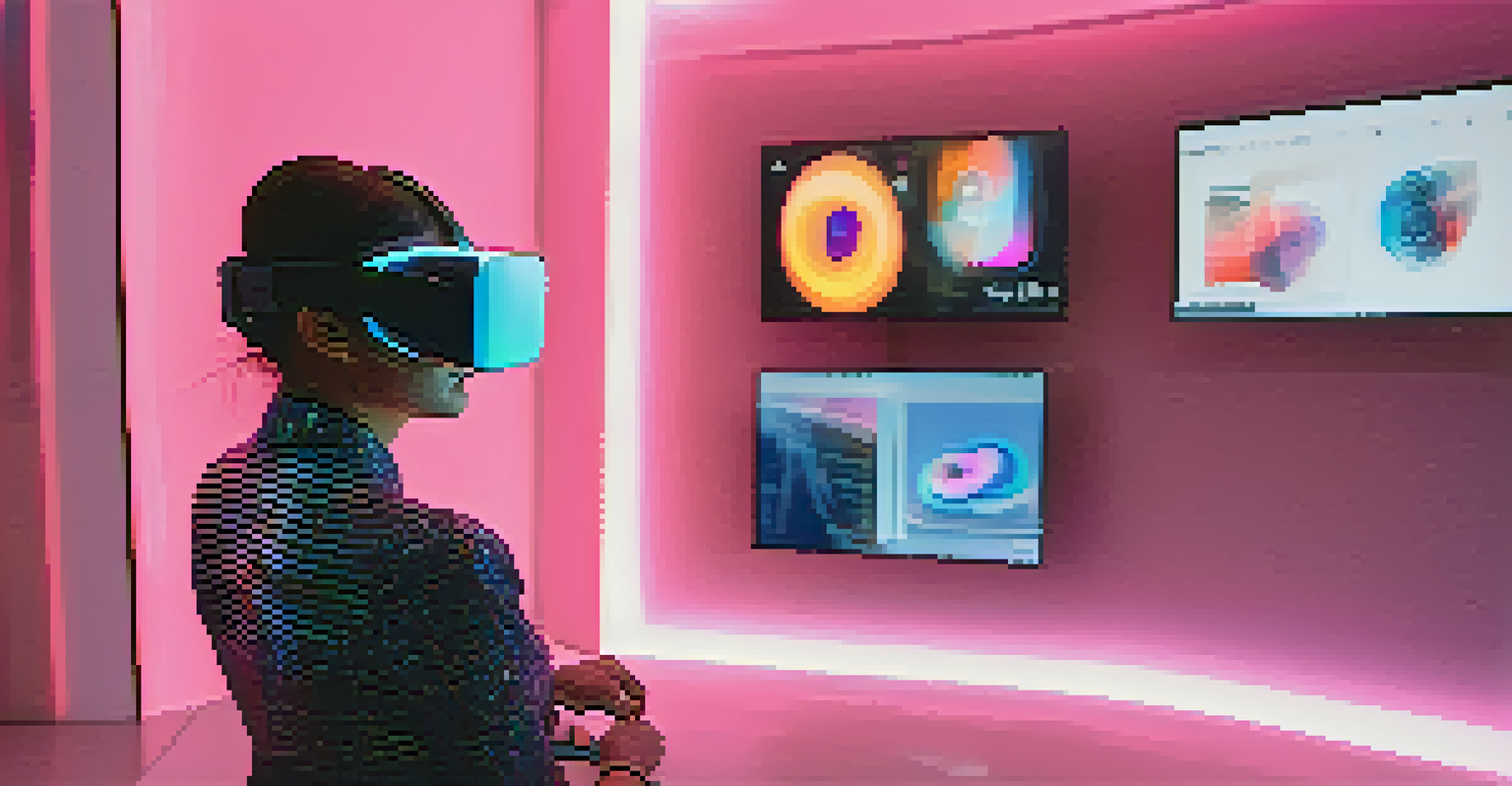Exploring the Intersection of NFTs and Digital Twins in Detail

Understanding NFTs: The Basics and Beyond
Non-Fungible Tokens (NFTs) are unique digital assets verified using blockchain technology. Unlike traditional currencies or even cryptocurrencies like Bitcoin, NFTs cannot be exchanged on a one-to-one basis because each token has distinct information and value. This uniqueness makes them ideal for representing ownership of digital art, collectibles, and even virtual real estate.
The future of ownership will not be about tangible goods, but about digital assets that are verifiable and unique.
NFTs have gained massive popularity in recent years, particularly within the art world, where artists can sell their work directly to buyers without the need for intermediaries. This direct transaction model not only empowers creators but also ensures greater transparency regarding ownership and provenance. An artist can attach royalties to their NFTs, earning a percentage every time the asset is resold.
As the NFT ecosystem expands, more industries are exploring its potential. From gaming to music, NFTs are being used to create new revenue streams, enhance fan engagement, and revolutionize how we think about ownership in the digital age.
What are Digital Twins? A Quick Overview
Digital twins are virtual replicas of physical entities, processes, or systems, created to simulate their real-world counterparts. Imagine a high-tech avatar that mirrors everything you do in real life, allowing for real-time monitoring and analysis. This concept is widely used in industries like manufacturing, healthcare, and urban planning to optimize performance and predict outcomes.

These digital replicas are fed with data from sensors and IoT devices, creating a dynamic model that evolves as the physical object or system changes. For instance, in manufacturing, a digital twin of a machine can help predict wear and tear, leading to timely maintenance and reduced downtime. This proactive approach can save companies significant time and costs.
NFTs Empower Digital Ownership
NFTs provide a unique and verifiable way to represent ownership of digital assets, enhancing transparency and direct transactions between creators and buyers.
The integration of digital twins can also enhance decision-making processes. By simulating different scenarios, businesses can better understand the implications of their choices, leading to more informed strategies and improved operational efficiency.
The Convergence of NFTs and Digital Twins
The intersection of NFTs and digital twins opens exciting possibilities for various industries. By linking a digital twin to an NFT, you can create a unique digital representation of a physical asset that is verifiable and traceable. This combination can enhance ownership rights, making transactions more secure and transparent.
Digital twins allow us to visualize the physical world in real-time, transforming how we manage and interact with our assets.
For instance, consider a luxury car brand that creates a digital twin for each vehicle sold, represented as an NFT. Owners can not only track the car's maintenance history and performance metrics through the digital twin but also have a secure, tradable NFT that proves ownership. This model could revolutionize how we approach asset ownership and resale in high-value markets.
Moreover, the concept can extend to real estate, where properties can be linked to NFTs that represent ownership rights, while the digital twin provides insights into property conditions and historical data. This integration simplifies buying, selling, and managing real-world assets.
Benefits of Merging NFTs with Digital Twins
Combining NFTs with digital twins offers several advantages, including enhanced security and authenticity. Digital twins provide a comprehensive view of the asset's condition, while NFTs establish irrefutable ownership records. This dual-layer of verification can reduce fraud and provide peace of mind for buyers and sellers alike.
Additionally, this integration can facilitate smoother transactions. Instead of dealing with complicated paperwork and intermediaries, owners can transfer NFTs easily, while the digital twin ensures that all pertinent data about the asset is accessible and up-to-date. This streamlined process can significantly enhance user experience and drive adoption.
Digital Twins Enhance Asset Management
Digital twins create dynamic virtual replicas of physical assets, allowing for real-time monitoring and improved decision-making across various industries.
Moreover, the potential for innovation is vast. Businesses can create new business models around their assets, offering services based on real-time data from digital twins, while ensuring secure transactions through NFTs. This synergy encourages creativity and exploration of new markets.
Real-World Applications of NFTs and Digital Twins
Several companies are already exploring the potential of combining NFTs and digital twins. In the fashion industry, brands are creating digital twins of their clothing lines that are linked to NFTs. Consumers can buy the NFT, which allows them to wear the digital version in virtual spaces while also having proof of authenticity and ownership.
In the world of gaming, developers are using this technology to create unique in-game assets. Players can own digital twins of their characters or items, represented as NFTs, which can be traded or sold. This not only enhances player engagement but creates a real economic model within the gaming ecosystem.
The automotive industry is also venturing into this space, with manufacturers offering NFTs that represent ownership of a car’s digital twin. This allows owners to track their vehicle's performance and history, while also providing a secure way to transfer ownership when selling.
Challenges to Consider in This Intersection
While the fusion of NFTs and digital twins presents exciting opportunities, it also comes with its challenges. One significant concern is the environmental impact of blockchain technology used to create and manage NFTs. Many blockchain networks require substantial energy, leading to debates about sustainability in the digital realm.
Another challenge is the regulatory landscape. The rapid development of NFTs has outpaced existing laws, leading to uncertainties regarding ownership rights, taxation, and consumer protection. As businesses navigate this new terrain, they must be prepared for potential legal hurdles.
Synergy of NFTs and Digital Twins
Combining NFTs with digital twins can revolutionize asset ownership and transactions, providing enhanced security and innovative business models.
Lastly, education is key. Many consumers and businesses are still unfamiliar with both NFTs and digital twins. To maximize the benefits of this intersection, stakeholders must invest in educating their audiences about the technology and its implications for ownership and asset management.
The Future of NFTs and Digital Twins
Looking ahead, the integration of NFTs and digital twins is poised to reshape various industries. As technology evolves, we can expect to see more sophisticated applications that enhance user experience and create new economic models. The potential for innovation is vast, and businesses that adapt early could gain a significant edge.
Moreover, as sustainability becomes a priority, there is a push for greener blockchain solutions. The industry is already exploring alternatives that minimize environmental impact while maintaining the core benefits of NFTs. This shift could bolster the adoption of these technologies in an increasingly eco-conscious market.

Ultimately, the future of NFTs and digital twins will depend on collaboration between technology developers, businesses, and regulatory bodies. By working together to address challenges and harness opportunities, we can unlock the full potential of this fascinating intersection.